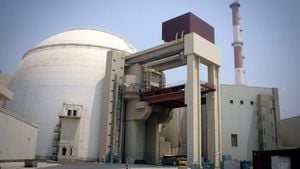Tuition costs for private schools across the United States have skyrocketed, leaving many parents grappling with the financial strain. This trend has prompted discussions about the affordability and accessibility of quality education for children.
According to recent data, the average tuition for private elementary schools hovers around $12,000, whereas private high schools can charge even more. Some prestigious institutions, especially those with exceptional academic track records, can demand upwards of $40,000 or more annually.
For example, recent reports highlighted Missouri's most expensive private school, which had its tuition pegged at approximately $48,000 per year. Following allegations and scandals, this institution closed its doors in 2023, sparking questions about the future of private schooling.
On the other hand, private school tuition varies significantly across states. Iowa's top-tier private school, for example, charges about $37,000, showcasing how regional differences can significantly affect educational costs.
Parents often justify these hefty price tags by pointing to the perceived benefits of private education. Advocates argue private schools frequently have smaller class sizes, advanced curriculums, and additional extracurricular activities compared to public schools.
Proponents for private schooling also point to noteworthy graduation rates and college acceptance statistics. Many private institutions boast over 90% graduation rates, which many parents see as indicative of the quality of education provided.
But not everyone is on board with the rising costs. Critics argue high tuition fees make it impossible for lower-income families to access quality education, reinforcing socioeconomic disparities.
The push for educational alternatives is evident across the nation. Discussions surrounding education savings accounts (ESAS) have gained traction, aiming to offer families financial assistance for private schooling.
The Texas House has recently been buzzing with talks about implementing education savings accounts as part of their educational reforms. With this, families could draw from state funds to pay for expenses related to private education or homeschooling.
Indiana serves as one example where ESAS have been successful. The state permits eligible students to use public funds to cover various educational expenses, from tuition fees to tutoring and outside academic support.
While some parents are calling for broader access to private education funding, others argue this could divert necessary funds from public schools. Many believe strong public education systems must be prioritized, ensuring all children have access to quality education regardless of their background.
Back at the Texas Capitol, lawmakers and witnesses engaged deeply about the potential implementation of such private school funding models. Some expressed concerns, indicating insufficient data supporting the benefits of ESAS.
State representatives are weighing the pros and cons, reflecting on feedback from various stakeholders, including parents and education advocates. With diametrically opposing views on education funding, the discussions remain heated.
Jennifer Easley, president of the Texas Parent Teacher Association, firmly believes the public school system needs more support before exploring voucher programs. “We think vouchers are a conversation down the road,” she asserted, emphasizing the urgent need to fortify public institutions.
Parents like Rachael Abell have also taken to the Capitol to voice their support for public education funding. Their arguments stress the necessity of channeling government support toward public resources instead of subsidizing private schooling.
While private school tuition remains high, the debate surrounding educational funding continues to evolve. Both sides are committed to advocating for the educational needs of students, whether through strengthening public schools or enhancing access to private education.
It remains unclear if state lawmakers will endorse legislation to support broader access to private school funding next year. The forthcoming election cycles may influence discussions, putting pressure on representatives to align with voter sentiments.
Despite the heavy toll of private school costs on families, the conversation about educational options shows promising signs. It suggests the possibility of new funding models aimed at creating more equitable access to quality education.
What remains to be seen is whether these discussions will lead to actionable changes benefitting all families. With the clock ticking down to the next legislative session, the stakes are higher than ever for parents and educators alike.



